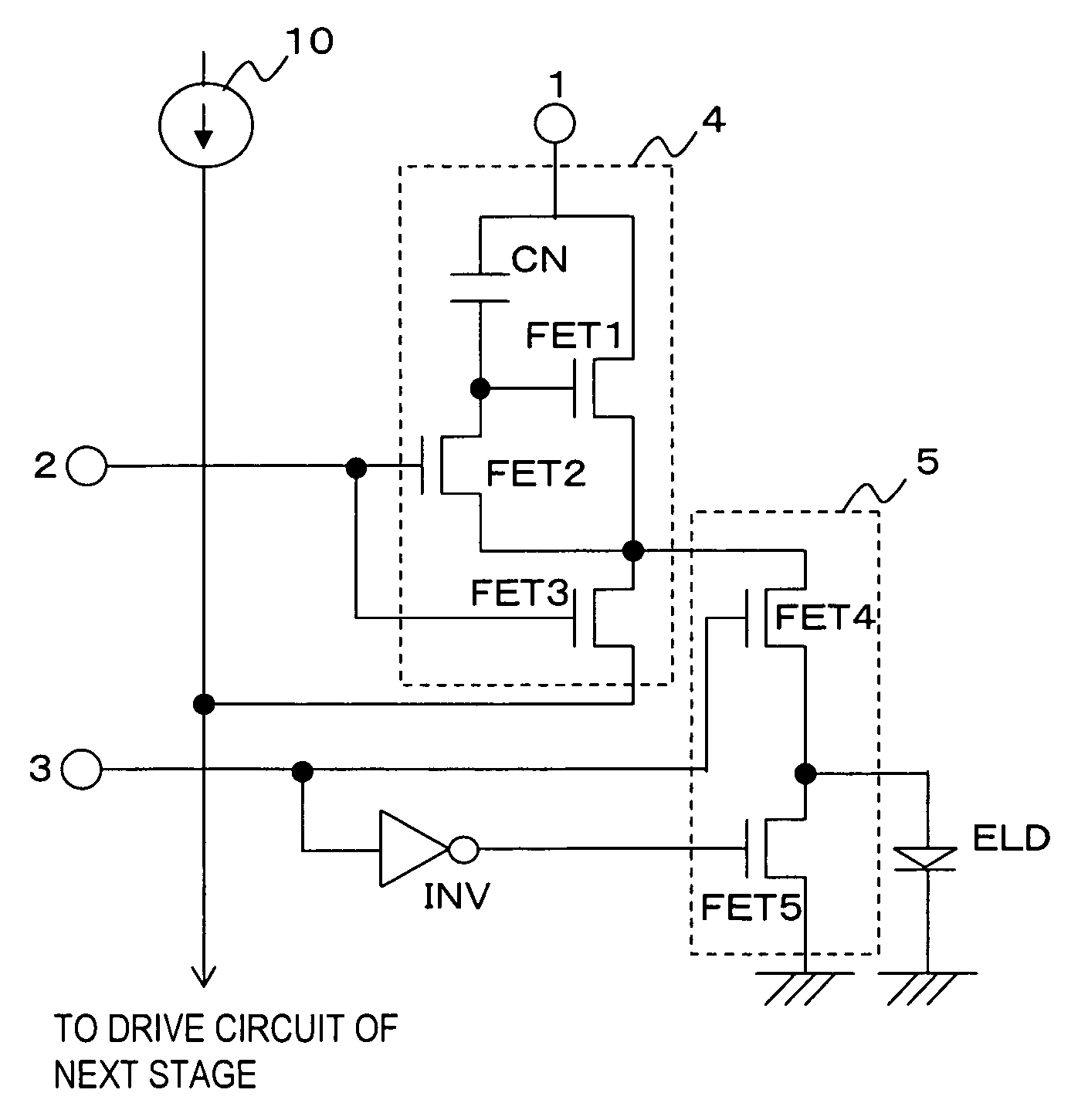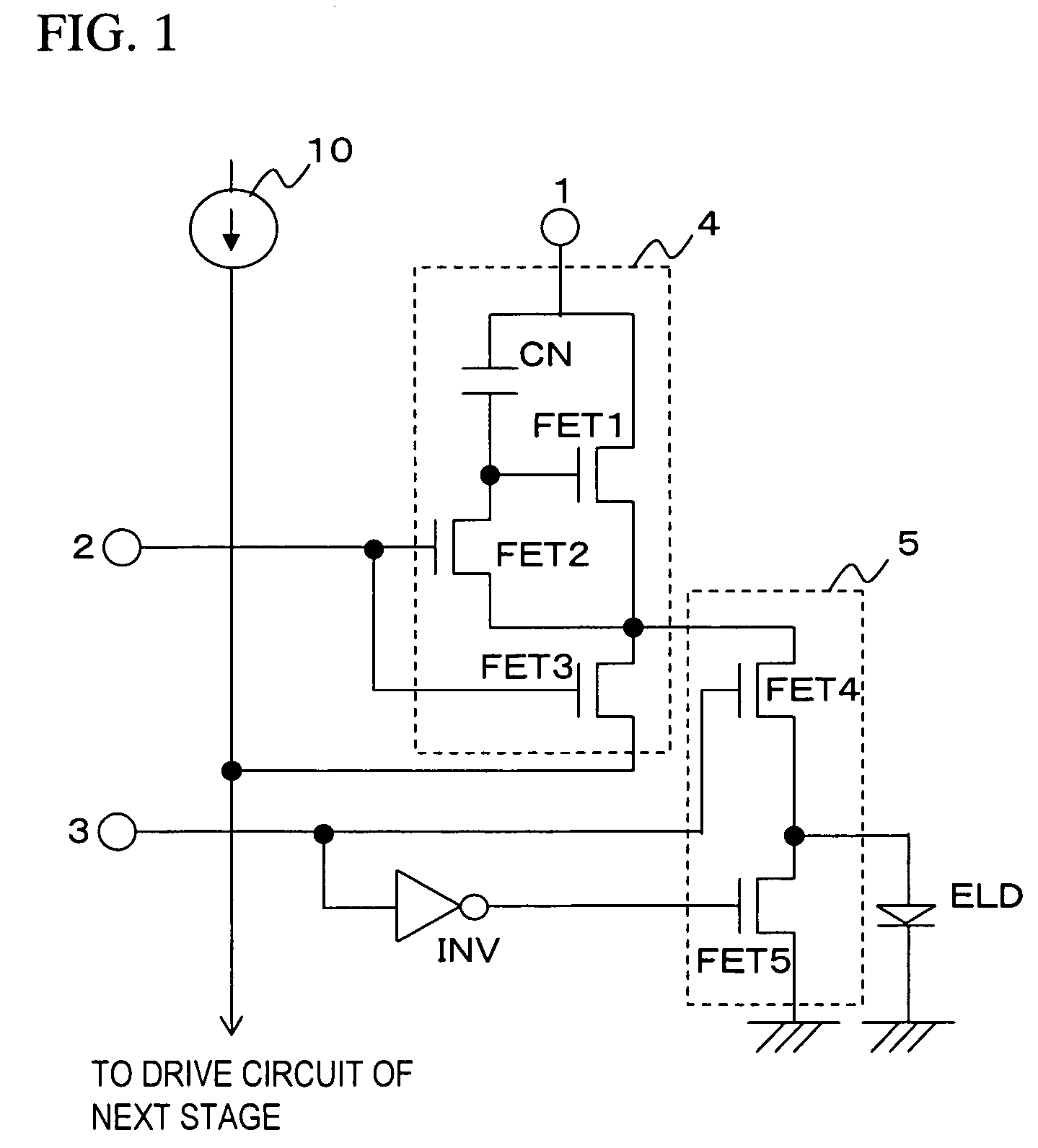Light emitting device
- Summary
- Abstract
- Description
- Claims
- Application Information
AI Technical Summary
Benefits of technology
Problems solved by technology
Method used
Image
Examples
Embodiment Construction
[0039] In this embodiment, a light emitting device of the invention is materialized as a print-head included in a printing system. The print-head has a plurality of organic EL elements ELD as a capacitive light emitting element, and by controlling the light and extinction of each organic EL element based on an input image, a latent image corresponding to the image can be formed on a photo conductor. Like the conventional art shown in FIG. 9, the print-head has plural sets of an organic EL eminent and the drive circuit 9, and one of those drive circuits is illustrated by FIG. 1.
[0040] A current for lighting the organic EL element ELD is fed from a current feeding circuit 4. And in this embodiment, a current copier circuit is used to the current feeding circuit 4. The current copier circuit includes switching elements FET1, FET2, and FET3, and a capacitor CN as a capacitive element for accumulating an electric charge, like the conventional art. The work is also the same as the conven...
PUM
 Login to View More
Login to View More Abstract
Description
Claims
Application Information
 Login to View More
Login to View More - R&D
- Intellectual Property
- Life Sciences
- Materials
- Tech Scout
- Unparalleled Data Quality
- Higher Quality Content
- 60% Fewer Hallucinations
Browse by: Latest US Patents, China's latest patents, Technical Efficacy Thesaurus, Application Domain, Technology Topic, Popular Technical Reports.
© 2025 PatSnap. All rights reserved.Legal|Privacy policy|Modern Slavery Act Transparency Statement|Sitemap|About US| Contact US: help@patsnap.com



